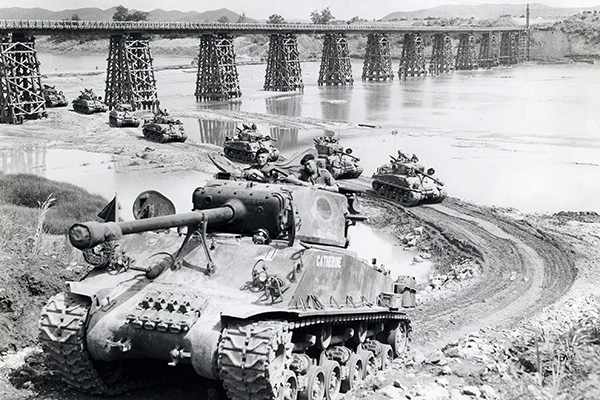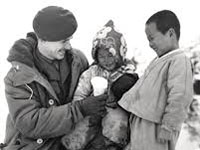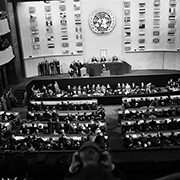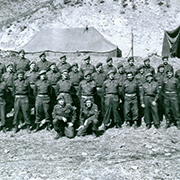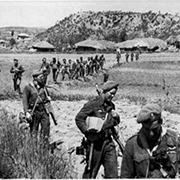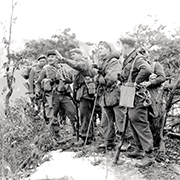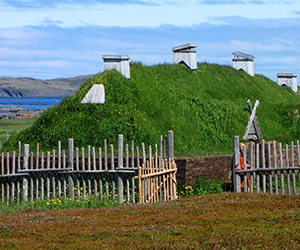CANADA HISTORY - War
Korea
The Korean War, fought from 1950 to 1953, quickly became the focal point of the early Cold War, marking the moment when the geopolitical struggle between the United States and the Soviet Union shifted from Europe to other critical regions around the globe. As the post-World War II order solidified, both superpowers sought to expand their influence, and the Korean Peninsula, long a contested region, became a battleground in this broader ideological conflict. Under Joseph Stalin’s aggressive leadership, the Soviet Union viewed every corner of the world as a potential theater for expansion, especially after consolidating its hold over Eastern Europe. Korea, divided along the 38th parallel at the end of World War II, presented a ripe opportunity for Stalin to test the resolve of the Western powers and extend communist influence in East Asia.
In the immediate post-war years, Korea had been caught in the growing Cold War divide between the United States and the Soviet Union. The country was split into two separate governments: the Democratic People's Republic of Korea in the north, under the leadership of the communist Kim Il Sung, and the Republic of Korea in the south, led by the anti-communist Syngman Rhee. Tensions between the two governments simmered, with each claiming legitimacy over the entire peninsula. But while the Soviet Union supported the North militarily and politically, the United States provided economic and military assistance to the South, though it remained unclear just how far the Americans would go to defend their fledgling ally.
It was in this context that Dean Acheson, Secretary of State under President Harry Truman, made a fateful statement in early 1950 that may have inadvertently signaled to the communist bloc that South Korea was not a top strategic priority for the United States. In a speech outlining America's defensive perimeter in the Pacific, Acheson did not explicitly include South Korea among the countries the United States would defend if attacked. This omission, though likely a diplomatic oversight, may have emboldened Kim Il Sung to believe that an invasion of the South would not provoke a significant American response. With the tacit approval of Stalin and support from Mao Zedong’s newly established People’s Republic of China, Kim Il Sung began planning a military offensive to reunify the Korean Peninsula under communist rule.
On June 25, 1950, the Korean Peninsula was thrust into the center of global attention when North Korean forces, under the banner of the Korean People's Army, launched a lightning strike across the 38th parallel. Kim Il Sung's plan was a bold one: a rapid invasion to quickly overwhelm the South Korean forces and bring the entire peninsula under communist control before the West could respond. The North Korean offensive was well-coordinated and caught the Republic of Korea (ROK) Army off guard. With Soviet-supplied tanks, artillery, and aircraft, the North Korean forces poured across the border in a massive assault, pushing southward with remarkable speed. The capital of Seoul fell within days, and the South Korean government was forced into a desperate retreat.
The invasion of South Korea was a direct challenge to the United Nations, and it was the first real test of the post-war international order that had been established in the wake of World War II. For the United States, the stakes were high. Truman, guided by the doctrine of containment, which aimed to prevent the further spread of communism, saw the invasion as part of a broader Soviet plan to undermine American influence in Asia. The fall of South Korea would not only signal a major victory for the communist bloc but would also have serious repercussions for the entire region, particularly in Japan, where the United States had recently established a critical foothold.
Within days of the invasion, the United Nations Security Council, led by the United States, passed a resolution condemning North Korea's actions and calling for member states to come to the defense of South Korea. Crucially, the Soviet Union, which would have vetoed such a resolution, was boycotting the Security Council at the time over the refusal to seat the People’s Republic of China as the legitimate government of China. This absence allowed the resolution to pass unchallenged, marking the beginning of a UN-sanctioned military intervention in Korea. Truman immediately committed American forces to the defense of South Korea, and soon after, a coalition of UN member states, including Great Britain, Canada, Australia, and other Western allies, began mobilizing troops and resources to confront the communist threat on the Korean Peninsula.
Militarily, the early stages of the Korean War were disastrous for the UN forces. The ROK Army, ill-equipped and poorly trained, was quickly overwhelmed by the more experienced and better-armed North Korean forces. The situation became so dire that within weeks, the UN forces were pushed back to a small defensive perimeter around the port city of Pusan in the southeast corner of the peninsula. This Pusan Perimeter, hastily established and fiercely defended, became the last stronghold of the UN forces. Truman and his generals, led by the indomitable General Douglas MacArthur, faced the grim prospect of being pushed entirely off the Korean Peninsula.
However, the tide began to turn in the late summer of 1950. In a bold and highly risky maneuver, MacArthur launched an amphibious landing at Inchon, a port on the west coast of Korea, well behind enemy lines. The Inchon Landing, executed on September 15, 1950, was a brilliant tactical success that caught the North Koreans completely by surprise. Within weeks, UN forces had recaptured Seoul and were pushing the North Korean army back across the 38th parallel. For a brief moment, it seemed as though the war might end with the reunification of Korea under the government of Syngman Rhee. But the conflict was far from over.
The Chinese leadership, alarmed by the prospect of a unified Korea allied with the West on its doorstep, decided to intervene. In late 1950, Chinese forces, under the guise of the People’s Volunteer Army, crossed the Yalu River and launched a massive counteroffensive, driving UN forces back and plunging the peninsula into a grinding war of attrition. What had begun as a regional conflict now threatened to spiral into a wider war, with both superpowers—the United States and the Soviet Union—watching carefully to ensure that the conflict did not escalate into a nuclear confrontation.
The Korean War, from 1950 to 1953, thus became a microcosm of the Cold War, where the larger ideological battle between capitalism and communism played out in bloody, brutal conflict. For Stalin, it was a chance to test American resolve and expand Soviet influence without engaging in direct confrontation with the West. For the United States, it was a fight to uphold the post-war order and prevent the further spread of communism in Asia. The war would ultimately end in a stalemate with an armistice in 1953, leaving Korea divided along the 38th parallel, much as it had been before. But the Korean War set the tone for the Cold War conflicts that would follow, as proxy wars in far-flung regions became the primary battlegrounds of the superpower struggle..



